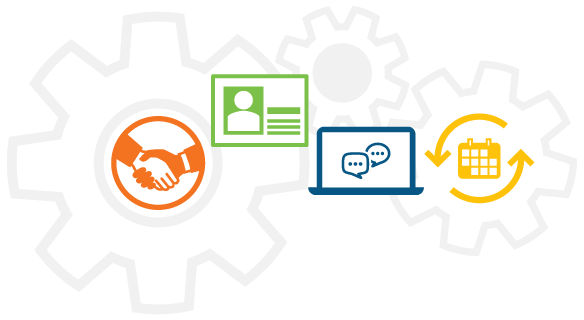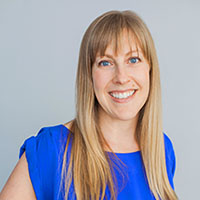
4 Benefits communication hacks for all employers, whatever their size

The San Francisco Marin Food Bank (SFMFB) feeds about a quarter of a million people every year by distributing groceries directly and through neighborhood organizations and local schools. It’s an organization that I donate to as an individual and that our team chooses to support every year through company donations.
The Food Bank’s dedicated team of 140 people makes an enormous difference in so many people’s lives. So, we were delighted to lend a hand to help them ensure their benefits were having a similar impact on their own employees. Earlier this year, we were honored to complete a pro bono project for the Food Bank, and the lessons we learned from that work can help all small and mid-size organizations succeed.
The Food Bank struggles with the same challenges facing most organizations—large and small:
- A small (albeit mighty) HR staff
- A need to communicate regularly and efficiently with employees—and recruits—about the importance of benefits
- The difficulty of reaching non-desk workers efficiently and effectively
- The need to keep benefits information updated and easily available to employees and their families
Just as with all our clients, we knew the best way to start addressing these challenges was to take a step back and look at the organization’s needs, and then develop a communications strategy to meet them.

Members of the Food Bank’s leadership team articulated the following four goals:
- Employees are aware of and use the benefits available to them, and recognize the value of their benefits
- All audiences—including enrolled spouses and recruits—can easily find and access benefits information when they need it
- Employees engage with the benefits they need to achieve their health, financial, and emotional wellness goals
- Recruits clearly see the value of the SFMFB benefits package so that it becomes a key differentiator as they compare employment options
Those goals may sound similar to your own organization’s; we see a version of these among almost all our clients, whether they’re a Fortune 100 Best Company to Work For or a large university.
We assessed the Food Bank’s current benefits programs and communications, interviewed employees, and developed a communication strategy that the Food Bank could implement with its existing resources. You can follow a similar process with our strategy roadmap.
Learning from employees
To get to the heart of the employee benefits experience, we delved into all the Food Bank’s current benefits communications. Next, we picked up our phones and interviewed a cross-section of employees. Some had been at the Food Bank for more than 10 years, others less. We hit every generation, from Millennial to Boomer. Each person had a different family situation, but we asked them all the same five questions, and gave them the opportunity to add their own thoughts. Their responses were key to informing the communication strategy we developed.
The Food Bank offers employees a very high-touch HR and benefits experience. From onboarding new employees to executing annual enrollment—and everything in between—HR ensures everyone understands their benefits and enrolls in them. HR typically meets one-on-one with employees, or in groups, distributing all the usual plan information, typically in hard copy format. And although benefits information is available on the organization’s intranet, longtime employees find it easier to reach out to their colleagues in HR when they have a benefits-related question.
Our interviews confirmed that employees truly appreciate their benefits. Overall, most employees were also satisfied with the way they receive benefits information. Still, we discovered opportunities for the Food Bank to communicate more effectively about the programs and services available to employees—current and prospective—and meet each of its four objectives.
Opportunities for even small and mid-size organizations
The strategy we developed for the Food Bank identified four areas where enhancements will help almost all organizations—small and mid-size, especially—improve their communications.
- Recruiting—To better market its highly competitive benefits to potential hires, we suggested the organization distill the highlights of each of its benefits into a beautifully designed, one-page tip sheet. Potential recruits should leave with it in hand, and new hires should get it during onboarding.
- New hire experience—Our recommendations for simplifying and improving onboarding included:
- Developing talking points and highlighting important dates for managers to be aware of, and use, to reinforce benefits enrollment
- Creating a simple set of materials to ensure new hires don’t miss any important steps—or benefits
- Reworking content from the existing new-hire checklist so that it’s more user-friendly
- Creating email and print reminders, and a distribution schedule, to spur specific benefits actions
- Centralizing resources—We recommended they house all their benefits information on the Food Bank’s website, outside the firewall, so that decision makers who aren’t employees can access benefits information. More on this below.
- Prioritizing year-round benefits education—To keep benefits top of mind and help employees understand their potential, we suggested:
- Monthly communications that focus on one specific benefit. We recommended the Food Bank leverage communications from its vendors to make this happen
- Interested employees recruited as “benefits ambassadors” to promote benefits and take some of the burden off HR
- Quarterly benefits fairs, organized by topic (e.g., finance, health, perks). The Food Bank can lean on vendors to staff these
How to do more with less
Rather than add to HR’s plate, our recommendations were intended to lighten their load. The most significant change we recommended was to put all benefits program information on its website, thereby making it accessible 24/7 to the people who need it: employees and their family members. This doesn’t have to be an elaborate, expensive change—it can be done on a single page, with PDFs of important information and links to provider sites. A minimal investment, but one that will yield huge savings by reducing the hours the team spends maintaining these documents on the current intranet.
Using technology in another way—setting up automated reminders for employees with computer access to nudge them to take specific actions (e.g., attend a training, enroll in a benefit)—will eliminate time-consuming tracking tasks, so HR can focus on bigger issues.
Leveraging employees to serve as benefits ambassadors also frees up HR and uses the great comradery among employees—making it easier to both disseminate information to staff and answer any questions they might have. Using a similar strategy with benefits providers and vendors, HR staff can easily assemble topical information as part of its year-round communication strategy.
Finally, by designing a series of templates for flyers and online communications, HR doesn’t have to reinvent the wheel every time it needs to distribute information. We recommended the Food Bank tap its roster of volunteers for someone with design experience who might want to put it to use helping the Food Bank create communications that employees can’t resist reading.
We went back to the Food Bank to deliver our recommendations, and followed up by sending them a digital file for their reference. We received this immediate response from HR Director Dale Rabinov: “Thank you to the Benz team for your thorough work on our behalf, and insightful recommendations. We look forward to implementing these.”
It’s not only nonprofits like the Food Bank that struggle with tight budgets. Still, communication done right pays for itself exponentially. For help making your communications budget case, check out our white paper, The value of investing in benefits communication.
Work with Us
We partner with organizations that value their people first. Let’s talk.

Jennifer Benz, SVP Communications Leader, has been on the leading edge of employee benefits for more than 20 years and is an influential voice in the employee benefits industry.

